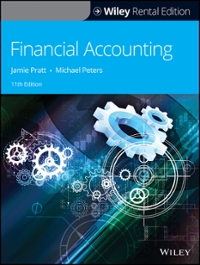Question
SIX FRAUD SYMPTOMS Accounting Anomalies- common accounting anomaly fraud symptoms involve problems with source documents, faulty journal entries, and inaccuracies in ledgers. Common fraud symptoms
SIX FRAUD SYMPTOMS
- Accounting Anomalies-common accounting anomaly fraud symptoms involve problems with source documents, faulty journal entries, and inaccuracies in ledgers. Common fraud symptoms usually involving source documents either electronic or paper such as cheques, sales invoices, purchase orders, purchase requisitions, and receiving reports.
- Faulty Journal Entry-recording an expense to conceal fraud involves making a fictitious journal entry. Fraud examiners must be able to recognize signal that a journal entry may have been manufactured to conceal a fraud. Manipulating expense accounts also has the advantage that expenses are closed or brought to zero balances at year-end, thus obscuring the audit trail. The following common journal entry fraud symptoms are the following: (1) journal entries without documentary support (2) unexplained documents to receivables, payables, revenues or expenses.
- Internal Control Weakness-fraud occurs when there is a perceived pressure, rationalization combine. Many individuals and organizations have pressures. Everyone rationalizes. When internal controls are absent or overridden, the risk of fraud is great. Internal control is comprised of the control environment, the accounting system and control procedures. Common internal control fraud symptoms include the following: (1) lack of segregation duties (2) lack of physical safeguards
- Analytical Fraud Symptoms-analytical fraud symptoms are procedures or relationships that are unusual or too unrealistic to be believable. They include transactions or events that happen at odd times or places; that are performed by or involve people who would not normally participate or that include odd procedures, policies or practices. They also include transactions and amounts that are too large or too small, that are performed or occur roo often or too rarely, that are too high or too low, or that result in too much or too little of something.
- Extravagant Lifestyle-most people who commit fraud are under financial pressure. Sometimes the pressures are real, sometimes they merely represent greed. Once perpetrator meet their financial needs, they usually continue to steal using the embezzled funds to improve their lifestyles. Often, they buy new cars. They sometimes buy other expensive toys, take vacations, remodel their homes or move into more expensive houses, buy expensive jewelry or clothes or just start spending more money on food and other day-to-day living expenses. Very few perpetrators save what they steal. Indeed, most immediately spend everything they steal. As they become more and more confident in their fraud schemes, and they steal and spend larger amounts. For example, on how people's lifestyles change when they embezzle, John Kate embezzled nearly $3million from her employer. She and her husband worked together to perfect the scheme over the period of seven years. Becausw they knew they might someday get caught, they explicity decided not to have children. With their stolen funds, they purchased a new expensive home and five luxury cars. Yet none of the employees noticed the change in lifestyle. They did not note that his wife drive a different car to work everyday of the week and that all her card were extremely expensive.
- Unusual Behavior-it reveals that when a person commits a crime, he or she becomes engulfed by emotions of fear and guilt. These emotions express themselves as stress. The individual often exhibits unusual and recognizable behavior patterns to cope with stress. Example, people who are normally nice may become intimidating and belligerent. People who are normally belligerent may suddenly become nice.
The indictment of Natalie and Thomas Fleury outlines a fraud scheme that was devised by Natalie Fleury. The scheme defrauded Natalie's employer of approximately $637,000.
https://sumail-my.sharepoint.com/:w:/r/personal/nklimovich_su_suffolk_edu/Documents/USA_v_Fleury.docx?d=w41889364d2af43b19e4ba873e4eb42a9&csf=1&web=1&e=iOGAGV
(Please, copy the link and paste it in the search line. It will bring you to the needed assignment. )
After reading the facts of the case in USA vs. Natalie A. Fleury and Thomas E. Fleury, select four of the six fraud symptoms from the textbook and explain how the fraud could have been detected earlier had someone recognized the fraud symptoms you've selected. The indictment does not outline any fraud symptoms, so you will need to apply what you learned about the various fraud symptoms from your reading and provide examples of plausible symptoms that "may have been present."
For example, we learned that fraudsters, especially first-time offenders, display "behavioral symptoms." You can explain in your discussion that co-workers with whom Natalie Fleury worked with should have been able to pick up on Natalie's change in behavior. Continuing with examples from the textbook, we know that behavioral changes may include insomnia, being defensive, inability to look people in the eyes, etc. Since we do not know about Natalie Fleury's day-to-day behavior, you would need to make some assumptions. Use your creativity for this assignment.
Step by Step Solution
There are 3 Steps involved in it
Step: 1

Get Instant Access to Expert-Tailored Solutions
See step-by-step solutions with expert insights and AI powered tools for academic success
Step: 2

Step: 3

Ace Your Homework with AI
Get the answers you need in no time with our AI-driven, step-by-step assistance
Get Started


